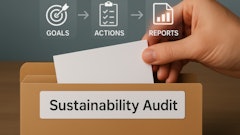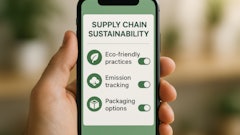
The environmental, social, and governance (ESG) landscape in 2025 presents a fascinating and challenging paradox: while political rhetoric increasingly questions sustainability initiatives, regulatory requirements continue to march forward with unwavering determination. This disconnect creates a complex environment for supply chain business leaders navigating compliance obligations across multiple jurisdictions.
The political vs. regulatory divide
The current ESG environment reflects a tale of two realities. On one hand, federal political discourse has grown increasingly skeptical of ESG initiatives, with some viewing them as contrary to traditional business values. However, state and international regulations tell a different story entirely.
This division is perhaps most evident in California's approach compared to federal sentiment. California's Senate Bill 253 (SB253) stands as a testament to regulatory persistence despite political headwinds. The legislation affects approximately 5,400 companies across the United States, roughly 75% of Fortune 1000 companies, requiring emissions reporting beginning January 2026 for companies with revenues exceeding $1 billion that conduct business in the state.
The Golden State's regulatory power extends far beyond its borders, functioning as a de facto national standard. With a GDP of $4.1 trillion in 2024, California surpassed Japan to become the world's fourth-largest economy, trailing only the United States as a whole, China, and Germany. This economic clout transforms state-level regulations into practical national requirements.
European developments and global alignment
The international landscape adds another layer of complication. While recent headlines highlighted France and Germany's move to postpone the EU's Corporate Sustainability Due Diligence Directive (CSDDD), the Corporate Sustainability Reporting Directive (CSRD) remains firmly in place and actively enforced.
The distinction between these directives is crucial. The CSRD focuses on reporting requirements, mandating companies disclose sustainability information including ESG data. The CSDDD, by contrast, would have required proactive due diligence to identify, prevent, and mitigate adverse human rights and environmental impacts across value chains. And while the CSRD has been the subject of discussion for years, the CSDDD is newer and likely more difficult for many organizations to comply with when they are already facing challenging global supply chain issues.
Even so, companies with international operations, particularly those already complying with European CSRD requirements, find themselves better positioned for California's regulations. The alignment between CSRD and California's Senate bills creates a degree of regulatory harmony despite political polarization meant to undermine ESG efforts.
The Scope 3 challenge
With the California regulation as is, Scope 1 (direct emissions) and Scope 2 (purchased energy) reporting requirements take effect in 2026. The real challenge looms in 2027 with Scope 3 mandates. These indirect emissions from a company's value chain represent the most complex aspect of ESG reporting.
The complexity stems from the breadth of Scope 3 emissions, which encompass 15 categories of upstream and downstream activities, including transportation and warehousing services that often represent significant portions of a company's total emission profile.
Current methodologies for Scope 3 reporting vary significantly in accuracy. The spend-based method, which allocates emissions proportional to a company's revenue contribution to suppliers, has gained traction due to its simplicity. However, this approach sacrifices precision for convenience, as the spend-based method is highly assumptive, thanks to a lack of primary data. It can provide regulatory compliance, but organizations are likely to struggle setting emissions targets and measuring actual operational improvements.
Technology's role in compliance
Advanced solutions are emerging to address these data accuracy challenges. Operational-level data, such as actual freight shipment information, can be converted to CO2e emissions data using Global Logistics Emissions Council (GLEC) factors. This provides significantly more accurate emissions accounting than spend-based estimates.
This operational approach enables companies to measure the impact of actual business decisions rather than simply adjusting spending patterns. For transportation, a critical component of most companies' Scope 3 footprint, granular tracking capabilities can bridge the gap between regulatory compliance and meaningful sustainability progress.
Market drivers beyond compliance
Despite political skepticism, market forces continue driving ESG adoption. Gartner ranks ESG regulations and trade policies as the second most significant driver influencing supply chains over the next 3-5 years. This market demand extends beyond regulatory compliance to encompass customer expectations and investor requirements. Customers are paying increased attention to ESG business practices and choosing companies that align with their personal values.
The regulatory timeline presents both clarity and urgency. California's SB253 requires Scope 1 and 2 reporting by January 2026 for the 2025 reporting year, with Scope 3 following in January 2027 for 2026 data. This compressed timeline demands immediate preparation, particularly for Scope 3 compliance.
The path forward
The current ESG landscape reflects a fundamental tension between political sentiment and regulatory reality. While federal discourse may question sustainability initiatives, state and international regulations continue advancing with practical deadlines and real consequences.
Success in this environment requires companies to navigate beyond political rhetoric toward pragmatic compliance strategies. This means investing in accurate data collection, partnering with experienced providers, and building capabilities that extend beyond basic reporting to enable actual operational improvements.
The companies that thrive will be those that recognize ESG compliance not as a political statement, but as a business imperative driven by regulatory requirements, market demands, and economic realities that transcend political cycles. In a world where California's economy rivals entire nations and international regulations shape global commerce, the practical demands of ESG compliance will likely outlast any political opposition.
As businesses prepare for January 2026 deadlines and beyond, the question isn't whether ESG regulations will continue; it's how quickly and effectively companies can adapt to meet them while maintaining operational excellence and competitive advantage in an increasingly complex global regulatory landscape.


















